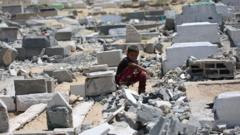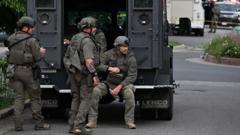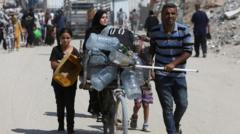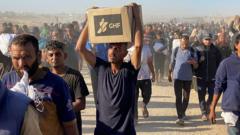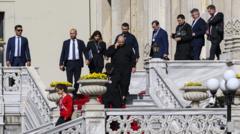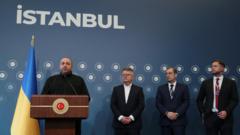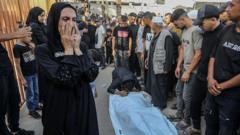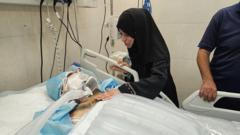In response to a US ceasefire proposal, Hamas has shown readiness to release Israeli hostages under specific conditions, while insisting on amendments to demands for humanitarian aid and a permanent truce. The complexity of the negotiations highlights the dire humanitarian situation in Gaza and the pressure that Hamas faces both internally and externally.
Hamas Offers Hostage Release Proposal Amidst Ceasefire Negotiations

Hamas Offers Hostage Release Proposal Amidst Ceasefire Negotiations
Hamas indicates willingness to release hostages in exchange for Palestinian prisoners, while demanding changes to a US-backed ceasefire plan.
Hamas has put forth a conditional agreement to release 10 Israeli hostages alive and the bodies of 18 dead hostages in exchange for a certain number of Palestinian prisoners, as it responded to a ceasefire plan proposed by the United States. However, Hamas has also requested changes to the framework, which includes demands for a complete withdrawal of Israeli forces from Gaza and assurances for ongoing humanitarian support, none of which are explicitly included in the current US proposal.
Israel, under Prime Minister Benjamin Netanyahu, reportedly agreed to the updated terms suggested in the US plan created by Steve Witkoff, the US special envoy for the Middle East. Witkoff described the Hamas response as "totally unacceptable" and counterproductive, emphasizing that immediate acceptance of the proposal is essential for commencing negotiations for a prolonged truce.
The response from Hamas reflects the precarious spot it finds itself in, with public pressure mounting amid deteriorating conditions for the 2.2 million residents of Gaza. Previous Hamas leaders have dismissed partial agreements, reaffirming their stance against a truce that does not lead to a full cessation of hostility. Yet, facing a potential escalation of military action from Israel, Hamas is grasping for a middle ground, presenting what it views as an alternative proposal to the US plan.
Though details of the US proposal remain largely undisclosed and unverified, reports suggest it comprises key provisions like a 60-day halt in fighting, a schedule for hostage exchanges, the release of a substantial number of Palestinian prisoners, and the facilitation of aid to Gaza through international organizations. Importantly, this plan was crafted to ensure Israeli approval, heightening the obstacles for Hamas to fully endorse it.
Netanyahu has stated his willingness to negotiate a short-term ceasefire to secure the hostages' release; nonetheless, his government maintains the assertion of returning to military actions if Hamas does not disarm. Defence Minister Israel Katz underscored the diminishing patience with Hamas, stating they must choose between accepting the US terms or facing annihilation.
As the situation develops, reports from Gaza's health ministry reveal a staggering toll from the ongoing conflict, with hundreds reported killed and injured due to Israeli strikes. The continuation of fighting follows Hamas's initial assault on Israel on October 7, 2023, leading to significant losses on both sides. As the humanitarian crisis deepens, efforts to mediate a ceasefire remain fraught with challenges, underscoring the urgent need for a sustainable resolution.

